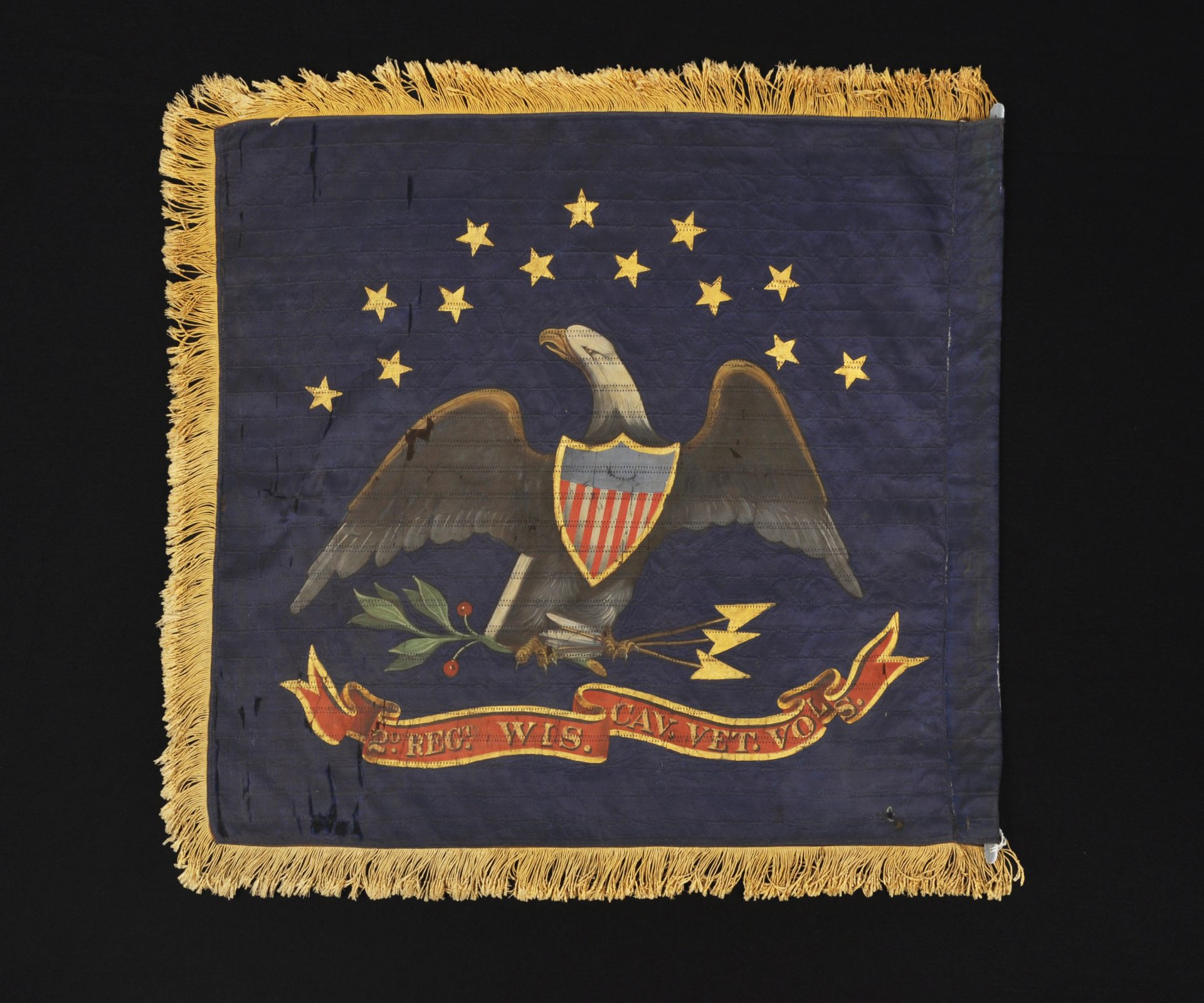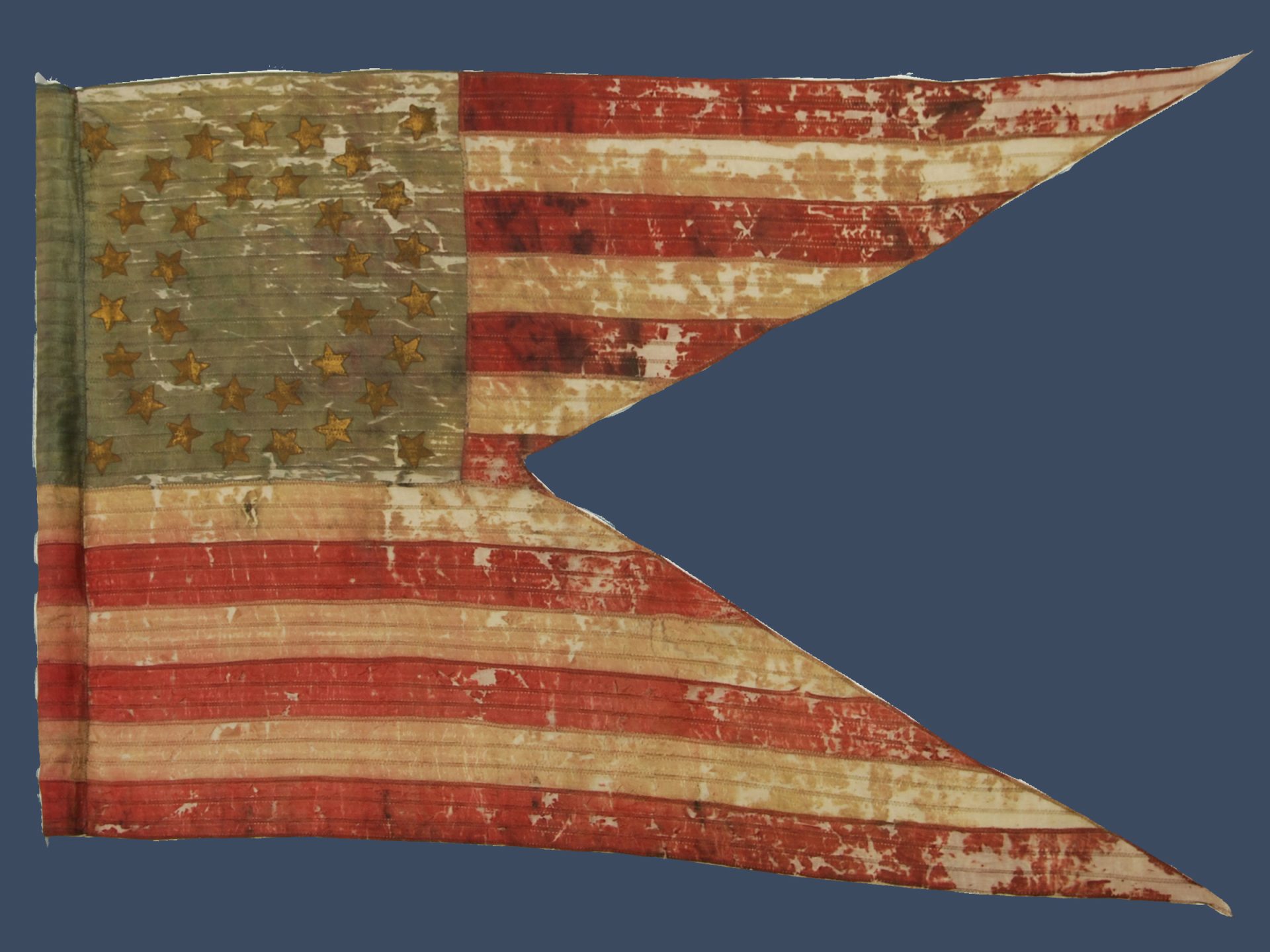Recruitment and Training
The Second Wisconsin Cavalry (2nd Wisconsin Cavalry) was organized at Camp Washburn, Milwaukee, Wisconsin between December 30, 1861 and March 10, 1862.
Active Service
On March 24, 1862, the regiment left Wisconsin for Benton Barracks in St. Louis, MO. From this point battalions from the regiment were sent into Missouri and Arkansas. They were in active service until the month of January 1863, when the Second and Third battalion were moved to Memphis, TN. The First remained in Missouri.
The following June, the Second and Third Battalions were transferred to Snyders Bluff near Vicksburg, MS. The day following the surrender of Vicksburg July 4, 1863, the regiment was assigned to the forces under General Sherman and participated in the Jackson Campaign July 5-25, 1863. On the return from this expedition the regiment remained at and in the vicinity of Vicksburg doing patrol and police duty until November 1864. In September the First Battalion rejoined the regiment near Vicksburg.
For the next several months the regiment served with expeditions in Mississippi, Tennessee, and Arkansas in the areas of Vicksburg, Ripley, Memphis, and Gaines Landing.
In August 1865, the regiment was ordered to Texas. Companies at various stations were assigned to patrol and garrison duty. On October 30, 1865, the regiment mustered out of service in Austin, TX.
The Second Wisconsin Cavalry returned to Madison, Wisconsin where it was disbanded on December 14, 1865.
Casualties
The Second Wisconsin Cavalry regiment suffered the following casualties during service: 24 enlisted men killed and mortally wounded, four officers and 284 enlisted men by disease. In total, 312 souls were lost.
For Further Research
Search our collections for photos and artifacts from Wisconsin in the Civil War. Read about other Wisconsin Civil War regiments. For detailed regimental histories of the U.S. Civil War, consult the Frederick H. Dyer, Compendium of the War of the Rebellion: Regimental Histories.
The histories above, unless otherwise noted, are adopted from Charles E. Estabrook, ed., Records and Sketches of Military Organizations, (Madison, 1914).
Standard, 2nd Wisconsin Cavalry

Standard, 2nd Wisconsin Cavalry V1964 219 7 - Dark blue silk with design of full color war eagle facing left with shield of red, white, and blue stars and stripes on breast, holding arrows and olive branch. 13 1 1/4" stars in a 2 row arch above eagle's head. " 2d REGt. WIS CAV. VET. VOLS. " in red scroll with gold border, and gold lettering shadowed black, low and right. Bordered by 2" yellow silk fringe on 3 sides and 1 3/4" sleeve for staff. Identical design both sides of flag.
Guidon, 2nd Wisconsin Cavalry

Guidon, 2nd Wisconsin Cavalry - V1964 219 8 - Thirteen horizontal alternating red and white silk stripes with faded blue silk canton, 13 1/2" on the staff by 14" on the fly, containing 35 gold painted 5 pointed stars arranged in vertical ellipses, 12 stars on the inner ellipse, 19 stars on the outer ellipse and one star in each corner of the field. There is a "B" in ink on the white stripe below canton. Entire flag faded and thin. a Flagpole: wood; spearhead tip. Guidon may have been carried by Company B of the 2nd Wisconsin Cavalry Regiment.

